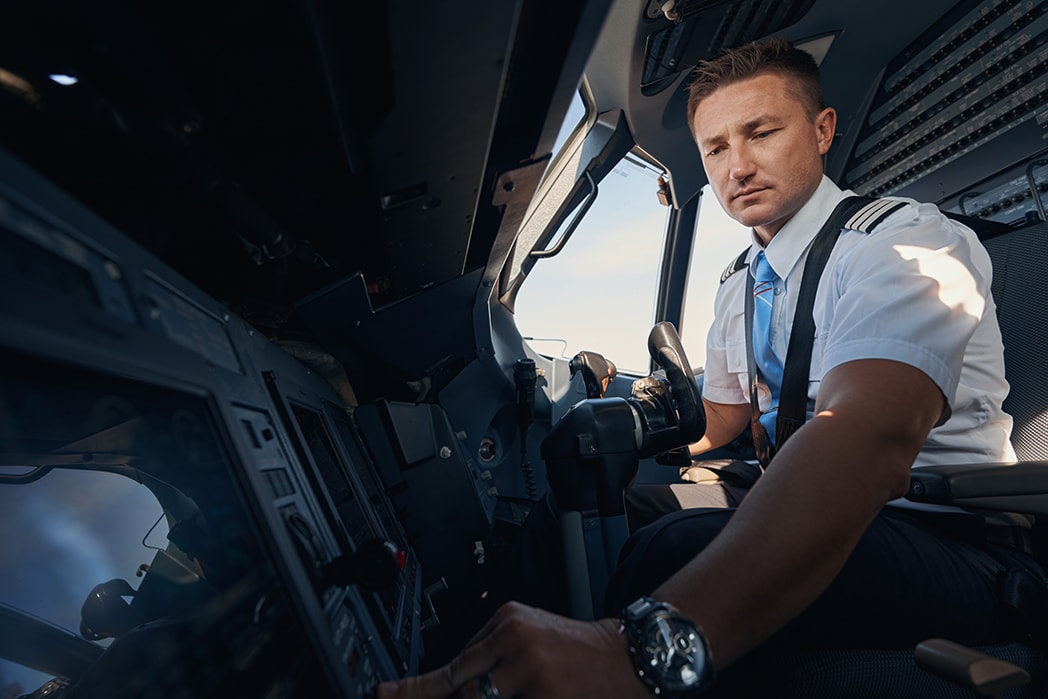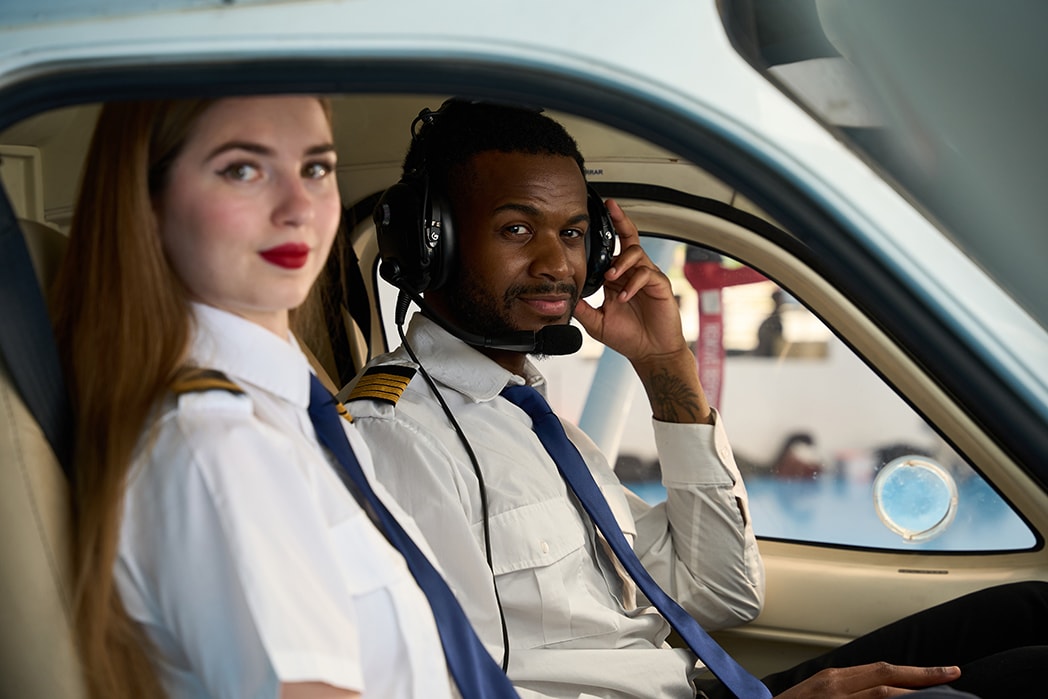10 Essential Things Every Pilot Needs in Their Flight Bag
Jun 27, 2025
Being prepared is key for every pilot. Whether you're a student or seasoned aviator, understanding the requirements pilot license holders must meet is essential when packing your flight bag.
This guide covers the ten essential things every pilot need from vital documents and communication tools to navigation aids and emergency gear ensuring a safe and efficient flight.
These pilot bag essentials help you stay organized, safe, and ready for any situation.
Key Takeaways
-
You must always carry your pilot certificate, medical certificate, government ID and logbook for regulatory and safety reasons.
-
Invest in good aviation gear like a headset for noise reduction, non-polarized sunglasses for clear visibility and a portable charger for comms and safety during flight.
-
Have backup tools and supplies like paper charts, first aid kit and two way radio for emergencies and equipment failures.
Pilot Certification and Documentation

One of the first things pilots must always carry is their pilot certificate and private pilot certificate.
This is not just a piece of paper; it’s proof of your training. Whether you’re a student pilot, new pilot or airline pilot, your student pilot certificate is non negotiable typically issued after completing initial training at a flight school.
A government issued photo ID is also required, this is your primary means of identification and compliance with federal aviation regulations.
And your driver’s license and pilot’s license is required to show you’re a confident pilot. Student pilot essentials to always keep in mind.
The FAA also requires pilots to carry a valid current medical certificate to show their physical fitness to fly. This is for compliance and safety and if you don’t have it during a flight, you could be in serious trouble.
This includes understanding the different classes of certificates and complying with sport pilot medical requirements when applicable.
A logbook is essential to track flight hours and experience. It’s not just a record; it’s a testament to your journey as a pilot.
During ramp checks by aviation authorities all these documents must be presented. Imagine being stopped for a random check and not having your paperwork in order; you could get fined or grounded. Make sure your flight bag has the following as part of your preflight planning:
-
Pilot certificate
-
Government issued photo ID
-
Medical certificate
-
Logbook
Quality Aviation Headset

An aviation headset is more than just gear; it’s a lifeline for communication and safety. Communication with ATC and other pilots is key in busy airspace.
A good headset minimizes distractions by reducing external noise so you can focus on the task at hand. It also protects your hearing from the constant engine noise so you stay sharp and responsive throughout your flight.
There are two types of noise reduction in headsets: passive noise reduction (PNR) and active noise reduction (ANR). PNR headsets use physical barriers to block out noise which can be somewhat effective.
ANR headsets use advanced technology to cancel out background noise, provides better sound isolation. This is especially useful in loud cockpit environment, that’s why ANR headsets are popular among pilots.
Comfort is another factor to consider. Long cross country flights can be brutal and an uncomfortable headset can be a big distraction during cross country flights. Look for ergonomic design that fits snugly without pressure.
Buying a good aviation headset will make your overall flying experience in the aviation industry safer.
iPad or Paper Charts
An iPad has become a must have for many pilots, making cockpit ops and flight planning and navigation so much easier. With apps that give you real time weather, flight plans and approach plates, an iPad can reduce your reliance on paper charts especially when flying in glass cockpit aircraft, where digital integration is standard.
But technology can fail, so many pilots also carry paper charts as a backup. This dual approach means if your electronic devices fail you’ll have the sectional charts to get you through.
Having both digital and paper charts is about being prepared. Imagine being on a long cross country and your iPad suddenly stops working. Paper backups can be the difference, as David Clark would say.
When you pack your flight bag include your iPad with the latest charts and a set of paper charts for redundancy.
Non-Polarized Sunglasses
Non-polarized sunglasses are often overlooked but a must have for pilots. They reduce glare but allow you to see your instruments and screens clearly, essential for safe flying.
Non-polarized sunglasses don’t interfere with LCD screens like polarized ones do, so they’re perfect for the cockpit. When choosing a pair make sure they’re headset compatible and consider a ballcap for extra sun protection.
There are options for different needs and budgets. For example the Flight Gear captain’s sunglasses are handmade from lightweight material and have non-polarized lenses for $89.95.
On the higher end are the Ray-Ban Meta sunglasses with non-polarized lenses and integrated speakers for comms for $299. These can be useful for pilots who want sun protection and extra functionality.
Non-polarized sunglasses are often cheaper than polarized ones so are a good option for pilots who need an affordable pair especially since they get used and abused so much.
Whether you’re flying in the bright sun or a night flight, a good pair of non-polarized sunglasses is a must have in your flight bag.
Snacks and Hydration
Long flights can be brutal so you need to keep your energy up. Carrying snacks and extra water is a must since pilots can’t stop mid flight for a snack. On warm days you should pack more water to stay hydrated.
Be careful when opening food and beverage containers at altitude as pressure changes can cause explosive decompression. Use containers designed for high altitude.
Staying nourished and hydrated isn’t just about comfort it’s about peak performance during your flight.
Fuel Tester
A fuel tester is a small but important piece of pilot gear that no flight bag should be without. Its purpose is to ensure the fuel you’re using is correct and contaminant free. Different types of fuel testers have different features for different needs:
-
Multi-Sump
-
Sporty’s
-
GATS Jar: allows you to test larger quantities of fuel and has a built in screen to filter out contaminants.
Multi-sump fuel testers allow you to test multiple fuel sumps without having to empty the tester each time so the preflight inspection is quicker and more efficient. Sporty’s fuel tester has:
-
Longer, thinner design
-
Easy to use
-
Works with both drain valve types
-
Does not support multiple checks in one container
Prices vary for these testers with the Multi-Sump aircraft fuel tester at $45.59 and Sporty’s at $12.95. Having a fuel tester in your flight bag is safety and reliability of your aircraft.
Portable Charger and Spare Batteries
In this day and age of flying, devices are a big part of flying. Keeping them powered is key. A portable charger means your devices from iPads to handheld radios will stay powered throughout the flight.
You don’t want your primary navigation tool to run out of battery mid flight. So a portable charger is a must have in your flight bag.
Spare batteries are just as important, as a backup battery for your devices and peace of mind that you won’t be left without power when you need it most.
Make sure your portable charger, extra batteries and spare batteries are compatible with your devices and the aircraft’s power system. This little prep will make a big difference in your overall flying experience.
Multi-tool and Flashlight
A multi-tool is a must have for pilots. The ideal toolkit should have:
-
a knife blade
-
Phillips-head and flathead screwdrivers
-
pliers
-
a wire stripper
-
a pilot’s gear
This little tool can help with in-flight and ground tasks from minor repairs to adjustments. Having a multi-tool in your tough flight bag means you’re ready for anything, even an emergency landing if you have to fly.
A flashlight is equally important. A good pilot’s flashlight should have multiple colored lenses to preserve night vision and a white light for preflight inspections, which are among the pilot essentials and other pilot essentials.
Whether doing preflight checks in low light or a night flight, a reliable flashlight and pilot controlled lighting systems are a must.
Having these tools with spare batteries means you’ll never be caught off guard. These are not just about convenience, they’re about safety and readiness in every flight.
First-Aid Kit
A first-aid kit is another must have in your flight bag and two flight bags. Essentials are adhesive bandages, gauze and antiseptic wipes. These basic items will help you deal with minor injuries that may happen during flight and get you back on track without delay.
Make sure to check and restock your first-aid kit regularly. A organized and compact first-aid kit will get you through any medical situation and give you peace of mind and safety. This little bit of time and effort will make a big difference in an emergency.
Two-way Radio

A two-way radio is a must have backup for pilots. If your radio fails, a handheld radio allows you to talk to ATC and other aircraft. The Icom IC-A25N VHF Airband Transceiver is the latest technology and longest battery life but costs $539.
If you want a more affordable option the Sporty’s PJ2+ COM radio costs $250 and is simple and easy to use but no NAV or Bluetooth.
When choosing a two-way radio consider the transmission and reception range. A good portable aviation radio should transmit 8–15 miles and receive 30 miles.
Carry this in your flight bag and you’ll always be prepared for communication challenges and if total radio failure occurs, understanding emergency light gun signals from ATC can be a lifesaving skill.
Summary
As you can see each item in your flight bag is important to a safe and efficient flight. From pilot certification and documentation to a two-way radio these essentials cover everything from legal to safety to comfort.
Be prepared and you can handle anything that comes your way and be a more confident pilot, just like a flight instructor would recommend during your flight training.
Remember flying is not just about getting from point A to point B; it’s about doing so safely and efficiently. Get these essentials, be prepared and enjoy flying.
Frequently Asked Questions
Why is a pilot certificate necessary?
A pilot certificate is essential because it verifies your qualifications and training, ensuring compliance with federal aviation regulations. Without it, you cannot legally operate an aircraft.
What is the difference between PNR and ANR headsets?
The key difference is that PNR headsets rely on physical barriers to block noise, whereas ANR headsets utilize advanced technology for active noise cancellation, leading to better sound isolation.
Why should pilots carry both an iPad and paper charts?
Pilots should carry both an iPad and paper charts because the iPad facilitates digital flight planning, while paper charts provide a dependable backup during electronic failures. This dual approach ensures safety and preparedness in the cockpit.
What are the benefits of non-polarized sunglasses for pilots?
Non-polarized sunglasses are beneficial for pilots as they reduce glare while preserving visibility of crucial instruments and screens in the cockpit. This ensures optimal performance and safety during flights.
Why is a two-way radio important in a flight bag?
A two-way radio is crucial in a flight bag as it provides a backup communication method, allowing pilots to maintain contact with air traffic control and other aircraft during a radio failure. This enhances safety and operational effectiveness during flight.
